Tips and Tricks
The following pages contains useful tips and tricks that can ease the work with TimePunch.
Leave, overtime and flexitime
Christmas and Sylvester
Christmas and Sylvester are no official public holidays, but most enterprises offer their employees a half day off.
Solution 1: Christmas and New Year’s Eve is working half a day, the company gives the employees a half-day back.
If this is also in your company, Christmas and New Year’s Eve must be entered in the TimePunch holiday. Both days are not stored as public holidays by default, because they are no public holidays.
To enter these two days the holiday editor must be opened via the menu "Extras / Edit public holidays".

Now, the country must be selected. A new holiday for "Christmas" is added via the context menu (accessible from the right click). It is important that the mark "1/2 holiday" and the date are set correctly.
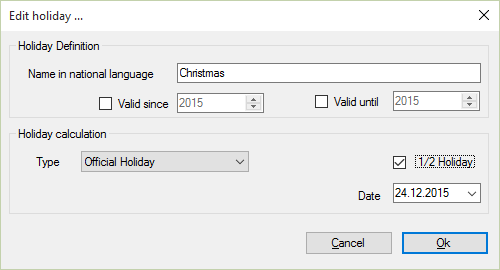
After entering the holidays the data must be stored with a click to the "Save" button. After that the new holidays are available in TimePunch.
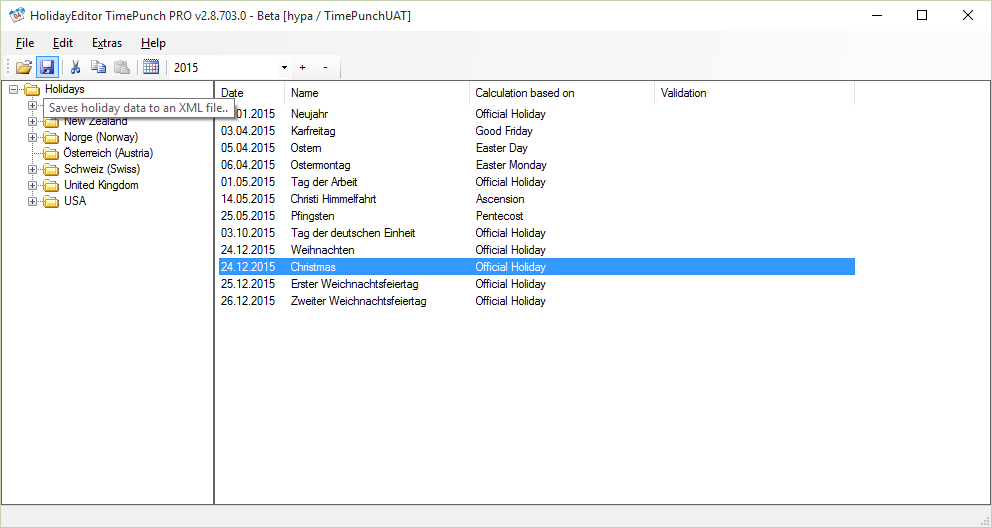
Solution 2: Christmas and Sylvester treated as normal leave days
In this case Christmas and Sylvester can be added as a public holiday within the holiday editor. Accordingly to that, the employees’ annual leave must be reduced by 2 days in order to reflect the additional holidays.
As described previously, the holiday editor must be opened and one needs to add a new holiday for Christmas and New Year’s Eve. In contrast to the solution 1 Christmas and New Year’s Eve are a full holiday.
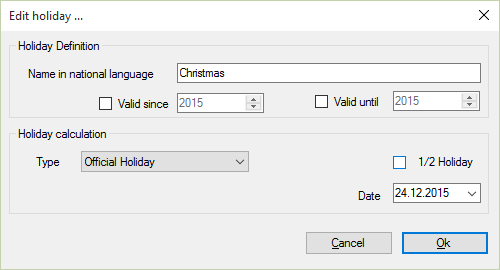
Solution 3: Christmas and New Year’s Eve are regular working days. Should the employee wish a day, he must apply for leave.
This is the simplest solution because no new public holidays must be applied. The staff provides a leave request, which will be entered on approval by the human resources department in TimePunch.
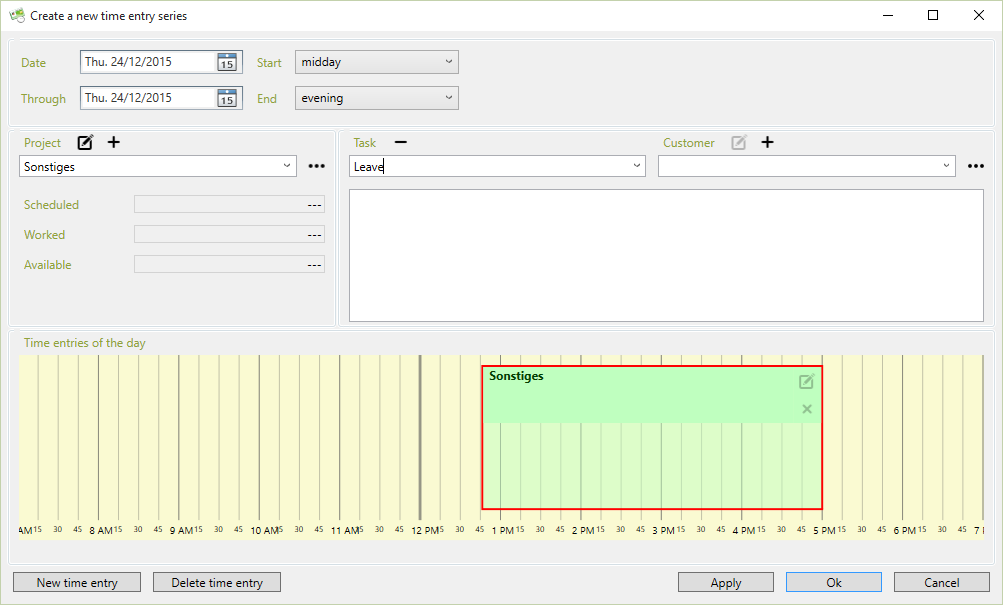
How can the holiday for one year be changed in the past?
To do this, change to the corresponding year in TimePunch and then select the tab "Annual leave" in the analysis and click on "Advanced". The annual leave can now be adjusted according to the specifications.
Why is the remaining leave from 2014 displayed for an employee, even though TimePunch was only started in 2015?
The remaining vacation days from the year before using TimePunch are determined from the employee profile from the entry data. If additional vacation days are entered here, these are displayed as remaining vacation from the previous year.
How can it be that the employee's monthly report displays a decimal point number for remaining leave?
In TimePunch it is also possible to book an hourly holiday. In this case, only the proportionate working day is booked as a holiday, not an entire working day. If this has not been done intentionally, it can also be done by modifying the working time model at a later date. In this case, the leave already booked differs from the changed working time model. This also results in a proportionately booked holiday.
The recommendation is the correction of the proportionally booked leave. For this purpose, the months should be searched backwards, in which month a decimal point number is displayed as vacation in the analysis in the "Vacation" tab.
Working time recording
Can you check who made a manual change to the time entry?
Yes, administrators have the right to display the columns "Modified" and "Modified by" in the overview.
How can it be that an employee is logged off before logging off from the time recording terminal?
If the employee's PC time recording was installed with the "TimePunch Watcher", the employee will be removed when Windows is logged off. The second logoff at the time recording terminal then has no effect.
A new employee starts on the 20th of the month. TimePunch calculates a negative overtime balance for the period up to the 20th. How can this be prevented?
If the employee does not start until the middle of the month, the time from the first to the beginning of the employee's work must be zeroed with an entry of several days in the entry "Other / work-free".
Automatic time-recording without possibility to manipulate
By knowing how to set up TimePunch it is possible to configure it in a way, that no the staff member can’t manipulate the recorded working time.
The following steps are necessary:
The working time model of the staff member should contain an automatic break of 30 minutes after 6 hours. With that setting can be ensured, that the break time settings are always applied.
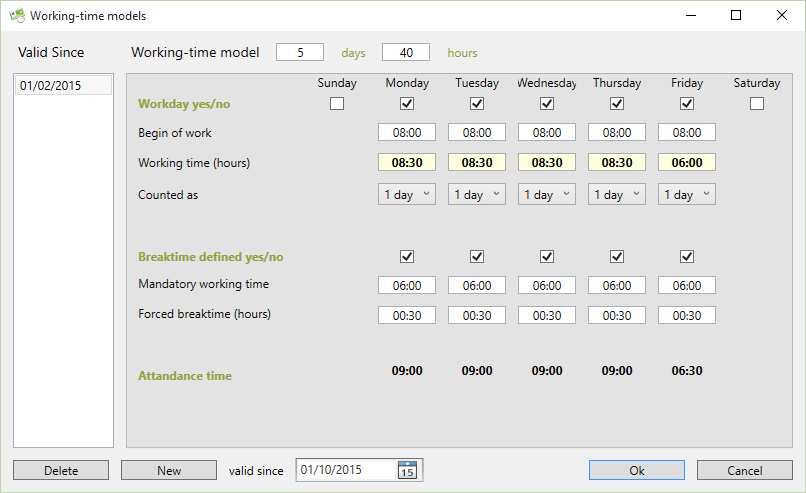
As a second the staff member should only have the right to record the working time. With this setting it can be ensured that the working times cannot be amended.

Additionally, the recording options should be set in a way that the staff member cannot stop the time recording. This prevents a willful stopping of the recording.
Another important point is that the time recording shall be stopped when windows get locked. In order not to track each short break (e.g. toilette) it’s recommended to enter 15 minutes fairness time.
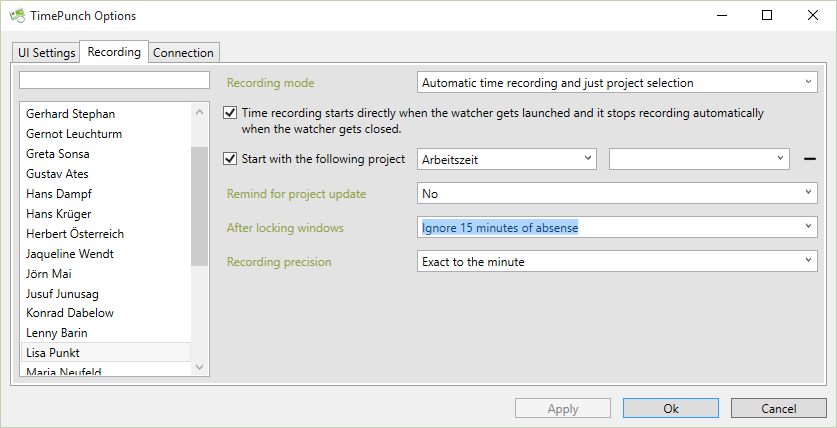
In order to make the setting “after locking windows pause time recording” work, the screen saver must be configured accordingly. This can also be done via the domain settings for all domain users.
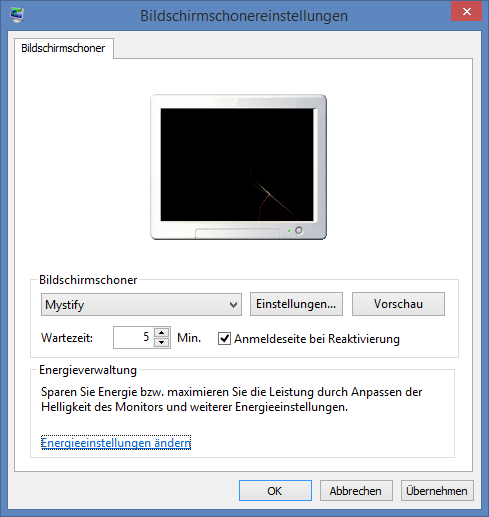
How can a business trip be displayed under "Trip" and evaluated as "Working time"?
Proceed as follows to obtain the following result:
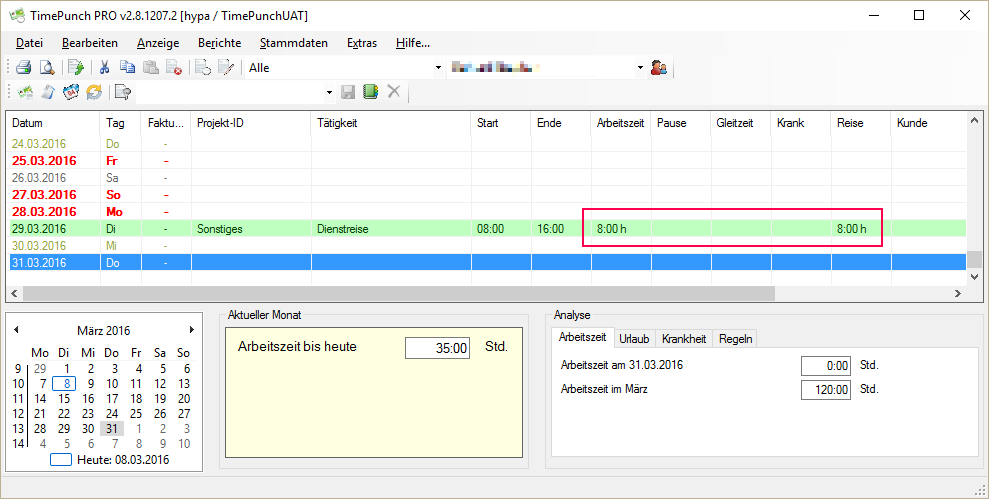
- Employees require a 100% allowance for travel expenses so that the entire travel time is counted as working time.
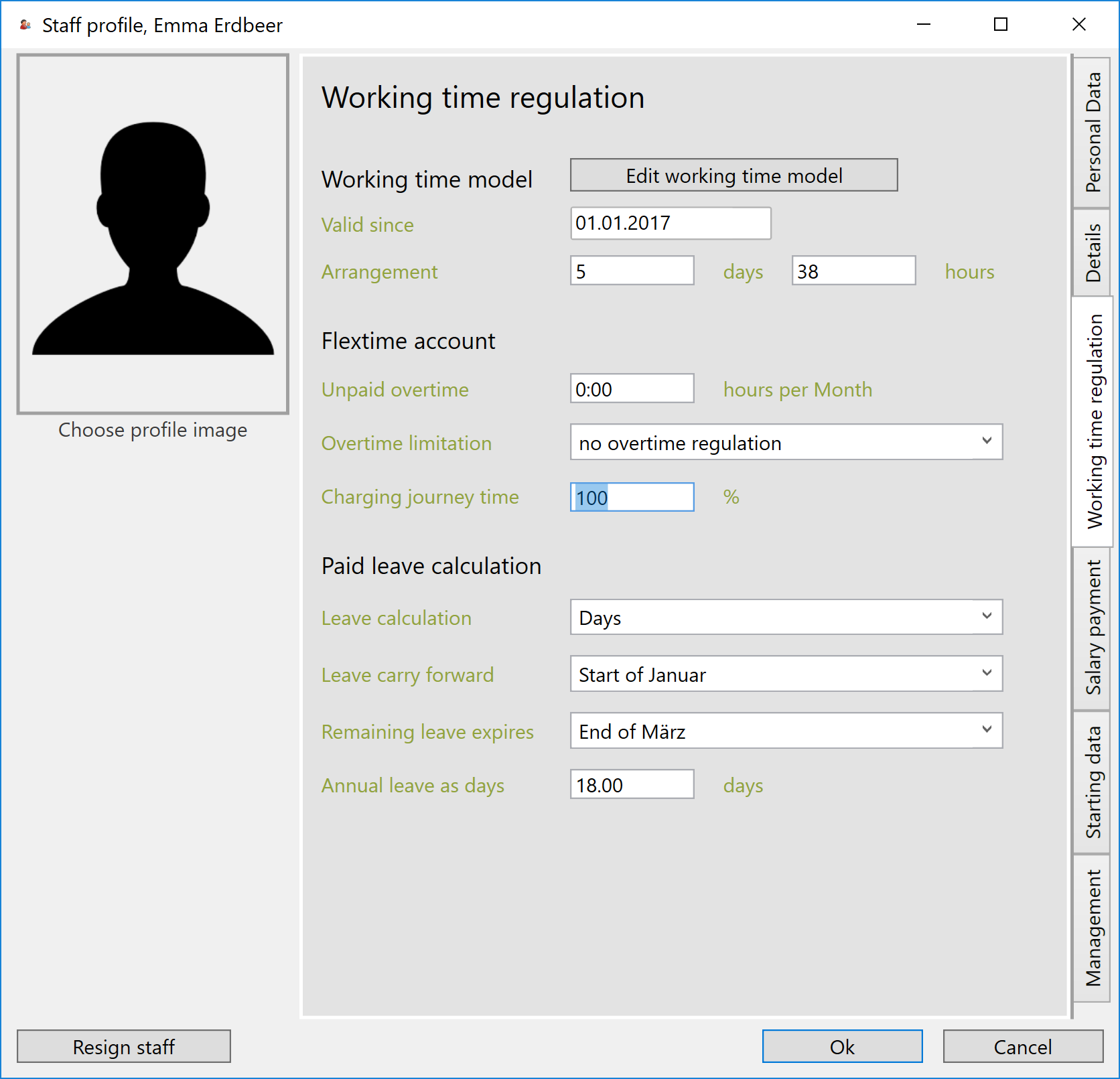
Tip: The easiest way to do this is to export the employee list in the master data, set the offset in Excel and then import the profiles again.
- The activity "business trip" must be booked as travel time / not as working time.
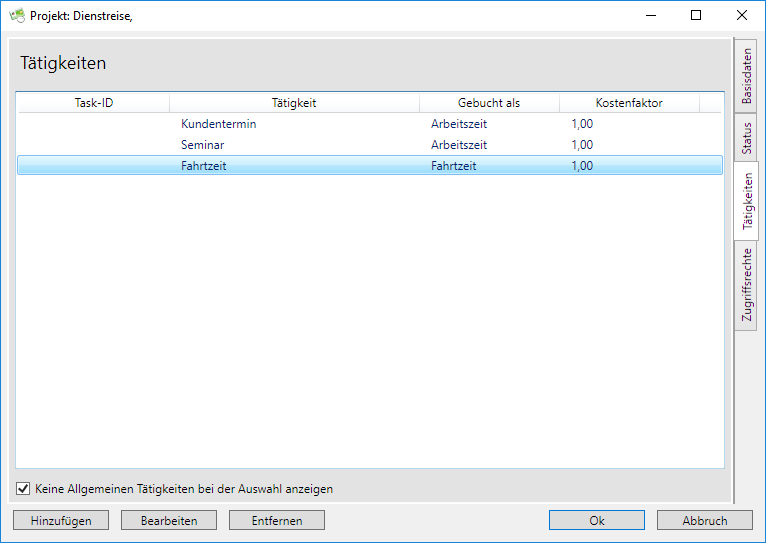
This has to be changed in the "Master data / Projects". Then edit the corresponding task and update it as described.
- In order for the change to take effect with the times already entered, existing entries must be opened again briefly and then saved again.
Installation and Maintenance
Month end closing and overall performance
The month end closing that can be done in TimePunch has to big benefits. First it prevents deleting previous recorded time-entry accidentally, because they get locked. Second it keeps the performance of TimePunch at a good level, because the times are set and there’s no need for a recalculation.
Because of this reason the month end closing should be done on a regular base, either by the staff member for their own times, or by the personnel office for all staff.
In TimePunch PRO the month end closing can be executed in menu ‘Extras / Month-end closing’.
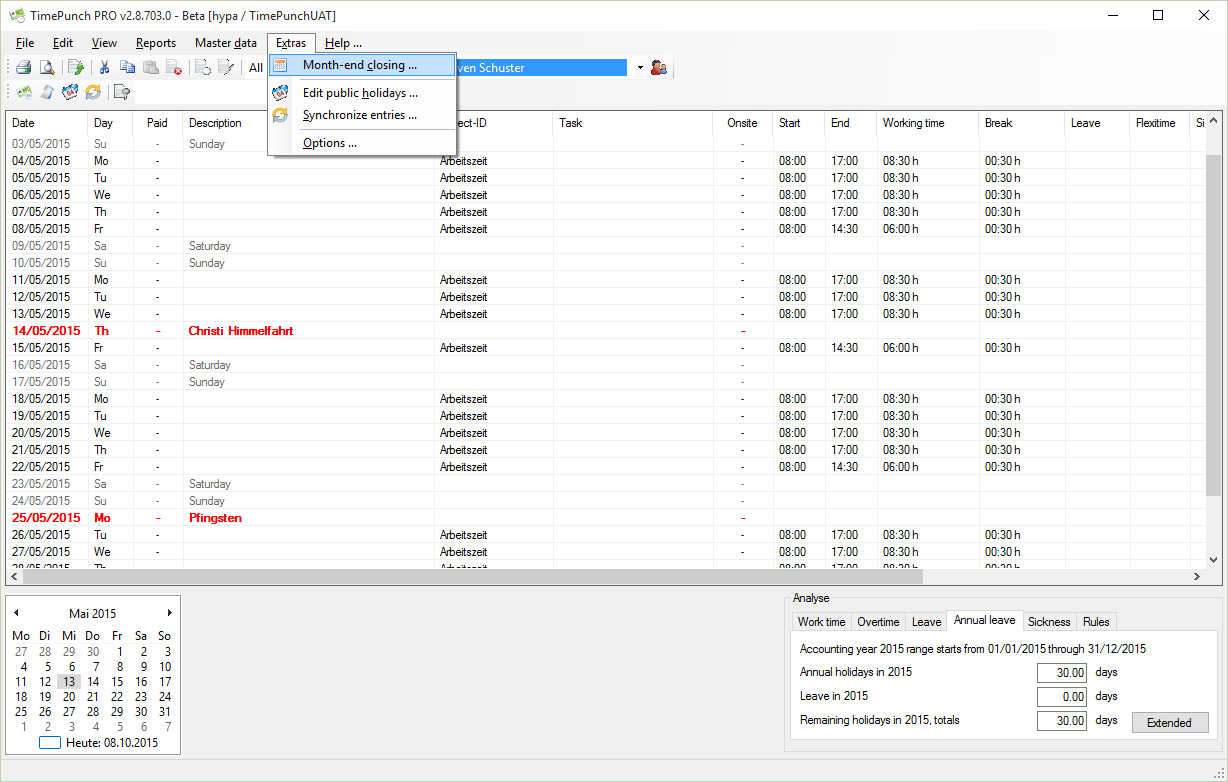
The following dialog appears.
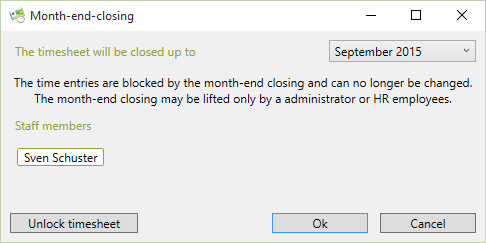
Here, the staff selects the month until that the time entries should be fixed. The month-end closing is performed by clicking on the "Ok" button.
The personnel office can perform month end for all employees by selected staff in the master data and then the click to button "Month-end closing".
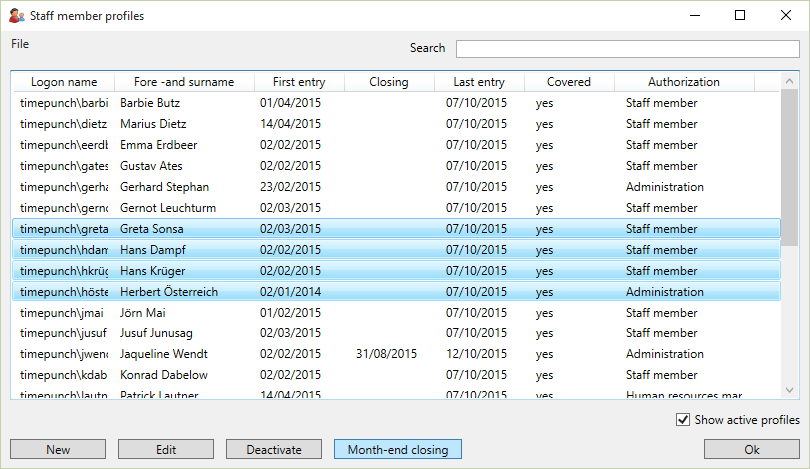
Also here opens the dialog for the month-end closing. After selection of the period to be closed it must be confirmed by the "Ok" button. The hours before the selected date will then be closed.
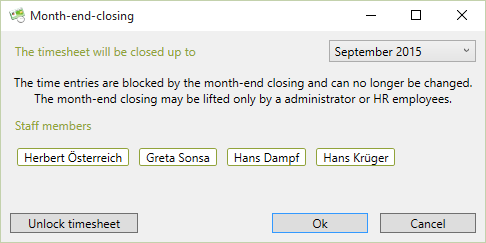
How can employees without change rights transfer times from their smartphone to TimePunch?
Employees cannot do this on their own. They lack the necessary rights to transfer data.
This restriction has the following reason:
If employees could synchronize the times, it would be possible for you to first export the times to another device (possibly another PC), edit the times there and then send them back. They could change their own times later, even though they are not allowed to do so due to the permissions setting.
Workaround:
As a workaround, an employee from the HR department who has the appropriate rights can receive the synchronization mail and transfer the times to the system for the employee.
How can the TimePunch Watcher be deactivated when it is not needed?
Windows 7, the TimePunch Watcher must be manually removed from the Windows Autostart folder.
With Windows 8 and Windows 10 it is possible to disable the TimePunch Watcher in the Windows Task Manager.
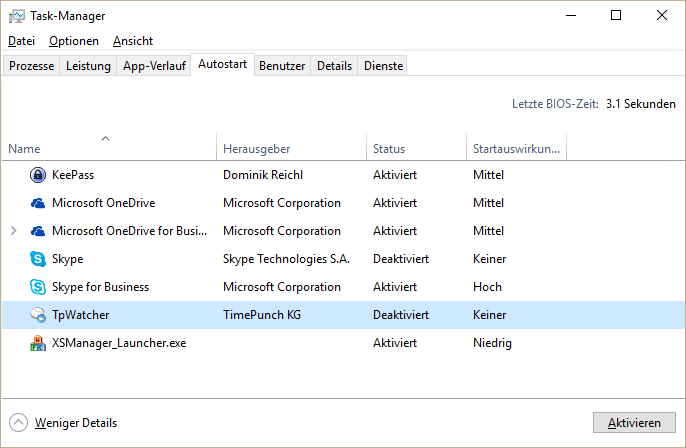
End of the Document